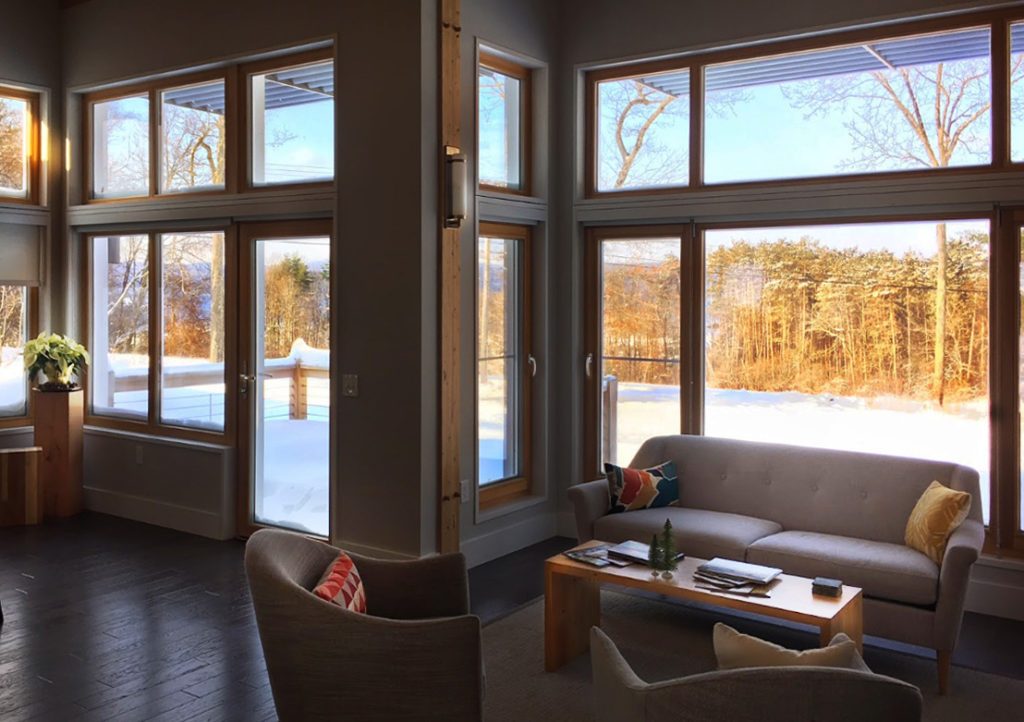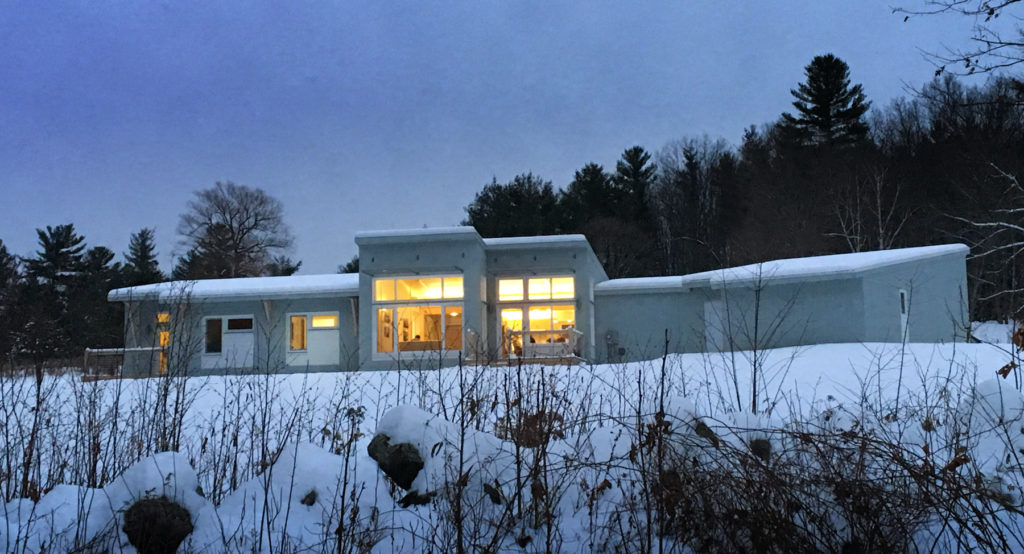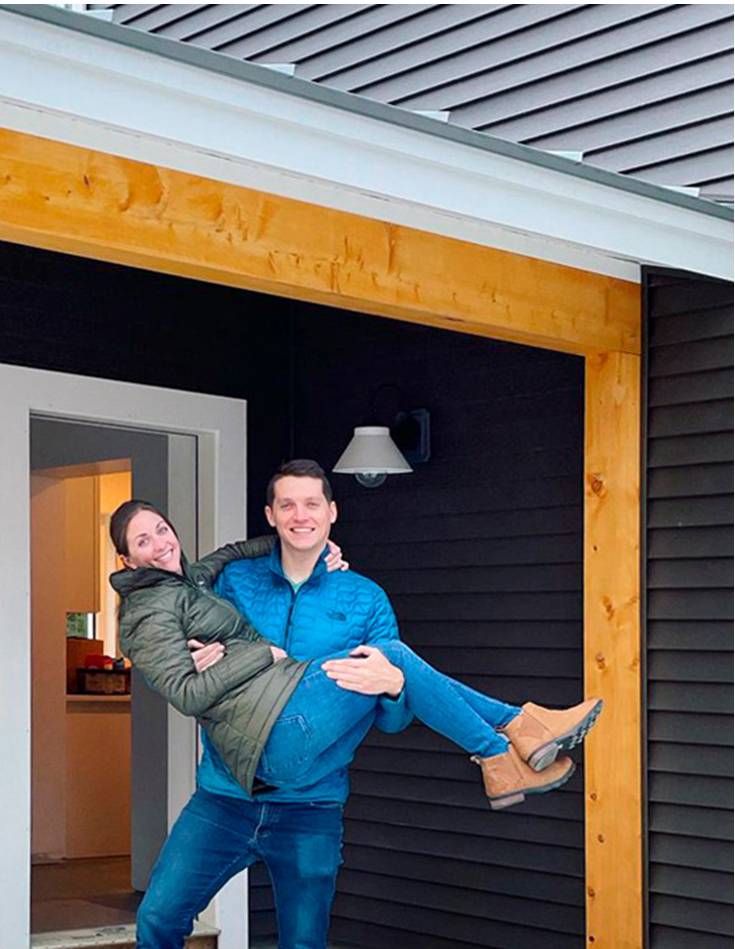Here in New England, we’ve recently had several spells of brutally cold weather, and there’s more to come. The high temperature forecast for this Saturday is -1 degree F. That’s the high. The temperature is projected to drop to -20F that night.
These are conditions that test the ability of homes to keep us comfortable, safe and healthy.

The plumbers and heating contractors with whom we work have been scrambling to deal with “no heat” calls—and the associated frozen pipes that can result—but none of these calls have been for Unity Homes. Ice damming is another potentially serious issue that is exacerbated by the combination of snow and cold temperatures. We see significant ice dams on most of the homes in our area—but not on any Unity Homes. A third potential consequence of the intense cold is uncomfortable drafts as the winter wind blows through the cracks and crevices found in most homes. Thanks to the airtight construction of our homes, the occupants are spared these drafts.
We know that high performance homes are better for the environment, because they sip energy, rather than guzzling it. But it’s extreme conditions like those we have been experiencing that can provide the most compelling case for the high performance of a Unity Home. When the mercury drops below 0 degrees and the wind outside is howling, our homes remain comfortable, quiet, safe and healthy. And built into every Unity Home is a high level of “passive survivability”—the ability of a home to hold in the heat for extended periods of time when the power goes out.
Our strategy for achieving a consistently high level of comfort is based on making the shell of the home—the walls, floors and roof—very well insulated and tightly sealed. Thick walls, triple-glazed windows and Passive House levels of airtightness result in heating loads that are unusually low. In other words, it doesn’t take much energy to heat (or cool) a Unity Home. The low loads allow us to use air source heat pumps, rather than conventional boilers or furnaces, to heat our homes.
Air source heat pumps have been around for many years, but only recently has the technology improved to the point where they can be a good fit for homes in cold climates. The Mitsubishi Hyper-Heat system that we favor is rated to -13 degrees—that is, the system can “pump” heat from minus 13 degree outside air, and deliver it inside the house. We are hearing anecdotally that the heat pumps in our homes are providing heat at temperatures even lower than -13 degrees.
Rather than sizing the heating systems in our homes to cover the very coldest days, we typically specify a small number of supplemental electric radiators to help keep our homes comfortable during those peak (or valley) periods. These radiators work especially well to augment the heat in spaces that are not directly served by the heat pump system—for example, a guest bedroom or home office. When the weather gets cold and stays cold as it has recently, the supplemental electric heat augmenting the heat pump is a simple and effective way to help ensure that the occupants stay warm.
Unity’s project managers have been reaching out to clients in completed homes to get a better sense of how the systems are operating at these low temperatures. We have not heard any complaints. In fact, the owner of a Unity home in central Vermont recently let us know how impressed he was by how the heat pump system was able to keep his house warm. And a homeowner in southern Vermont wrote this: “Our system is working well and achieving our heating needs, even at -11 degrees.”
Perhaps the most valuable benefit to living in a Unity Home is the peace of mind that comes from knowing that regardless of what the weather may bring, the home will remain comfortable, quiet, healthy and secure.







